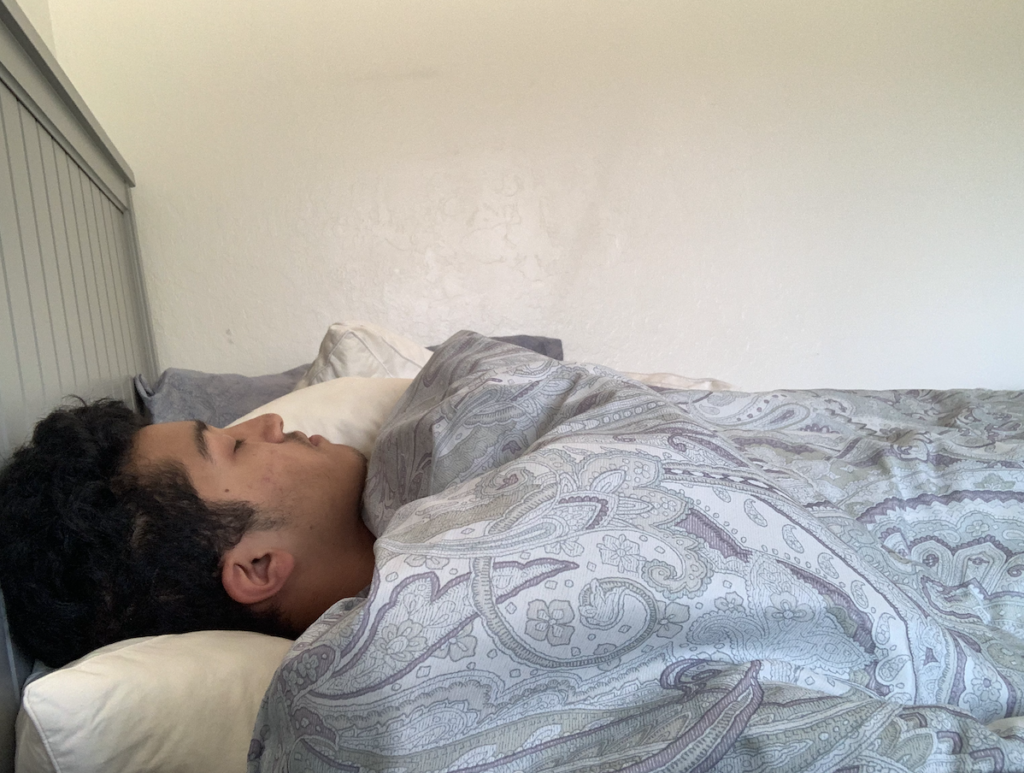Like many of us, my summer sleep schedule was absolutely terrible by typical standards. For the entire summer, I would sleep from 2 a.m. to 10 a.m., which was surprisingly functional. I was able to work late hours with no distractions, while still being able to wake up with a clear mind.
Of course, when it came time for school, there was zero chance I could maintain this schedule. So, I planned to slowly ease back into a school-friendly timeline. Starting a week before school, my goal was to sleep 30 minutes earlier each day until my regular sleeping time was 12 a.m.
Unfortunately, my time management skills weren’t refined enough to carry out this routine. I completely failed my plan and slept at around 2 a.m. every night that week.
I woke up at 7:30 a.m. on the first day of school with a hefty five hours of sleep under my belt. For some reason, instead of showing up to class alert and ready to learn, I was groggy and unfocused.
Thrown into the whirlwind of school, I found there was no time for gradual change, so I modified my goal: I planned to go from sleeping from 2 a.m. to 10 a.m. directly to sleeping from 12 a.m. to 7 a.m, which seemed easy enough at the time.
Let’s be clear: This was a terrible plan, and I knew it at the time. However, there were no better options, and I was curious to see what would happen, so I decided to simply grind it out.
To ensure that I woke up on time, I took the most conventional approach possible: setting a simple alarm for each morning. However, this ended up completely useless; I would simply wake up, silence my alarm and go back to sleep.
For example, one night I wanted to wake up at 6:30 a.m. to complete English homework. I did end up succeeding by waking up at my planned time, which was a good start.
But I then proceeded to sit in my bed for three minutes while staring blankly at the ground trying to remember what was so urgent. Eventually, I decided it wasn’t worth the effort and went back to sleep.
When I finally did wake up an hour later, the eureka moment of English homework was undoubtedly satisfying. Of course, this was quickly overshadowed by the terrifying realization that I had less than an hour to get through a bucketload of English work.
I couldn’t let this complete failure repeat itself. To tackle the issue, I forced myself to wake up with 10 separate alarms between 6:30 a.m. and 6:40 a.m., which were alternated between my Google Home and my phone. In the morning, I had to get out of bed to turn off the Google Home, get back in bed to turn off my phone, and continue this pattern until I was awake enough to start my day.
Technically, it worked. After the first week of school, I had completely re-integrated myself into a working environment and had a decent sleep schedule of midnight. to 7 a.m.
Having said that, the process of slamming my mind into compliance is not one I would ever recommend. While trying to sleep at midnight, I would instead lay awake for hours tossing and turning. When I would finally wake up, it was with a clouded and slow mind; I could physically feel myself in a lower gear than normal.
Another unforeseen side effect is that I accidentally conditioned my brain to despise the sound of the alarms I used. I internally cringe every time I hear the melodic beeps, and as of now, I will never use “Uplift” from the iPhone ringtones ever again.
While it may not always be possible, it is a far better idea to gradually ease your mind and body into important schedule changes rather than forcing it in one go. Otherwise, don’t be surprised when you log into your first period as a disoriented zombie with bad hair, wrinkled pajamas and an intense craving for sleep.
























